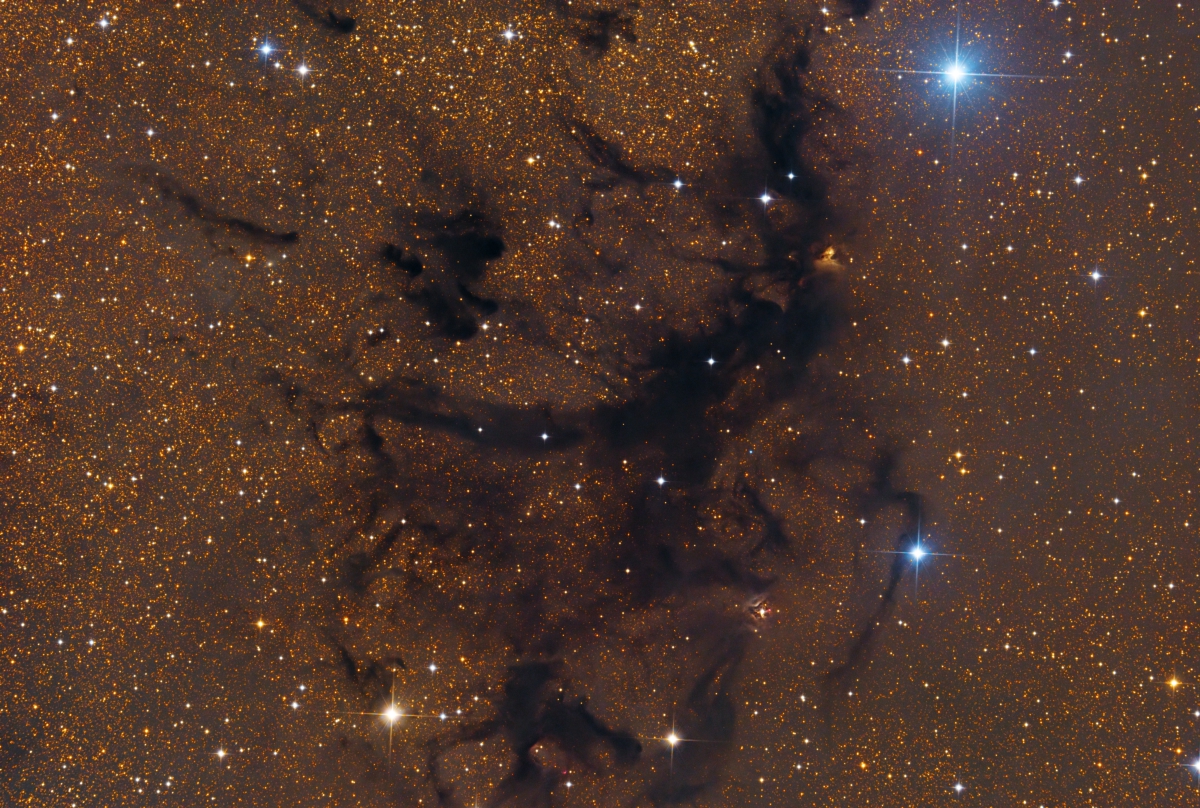2022年10月29日
LDN 673: Dark Clouds in Aquila
Image Credit & Copyright: Frank Sackenheim, Josef Poepsel, Stefan Binnewies (Capella Observatory Team)
Explanation: Part of a dark expanse that splits the crowded plane of our Milky Way galaxy, the Aquila Rift arcs through planet Earth’s skies near bright star Altair. In eerie silhouette against the Milky Way’s faint starlight, its dusty molecular clouds likely contain raw material to form hundreds of thousands of stars and astronomers search the dark clouds for telltale signs of star birth. This telescopic close-up looks toward the region at a fragmented Aquila dark cloud complex identified as LDN 673, stretching across a field of view slightly wider than the full moon. In the scene, visible indications of energetic outflows associated with young stars include the small red tinted nebulosity RNO 109 above and right of center, and Herbig-Haro object HH32 below. These dark clouds might look scary, but they’re estimated to be some 600 light-years away. At that distance, this field of view spans about 7 light-years.
Tomorrow’s picture: a dark and spooky night
LDN 673: 天鹰座的暗星云
图像提供与版权: Frank Sackenheim,Josef Poepsel,Stefan Binnewies(Capella Observatory Team)
说明: 在地球天空中,穿过亮星牛郎附近的天鹰裂谷,是分割我们银河系拥挤盘面的辽阔暗区之一。这些以银河暗淡星光为衬托的怪异剪影,其实是富含尘埃、拥有可制造数十万颗恒星的原材料之分子云,是以天文学家不断在这些暗星云里,搜寻恒星诞生的迹证。这张跨幅略大于满月的望远镜特写图像,呈现了称为LDN 673的碎裂天鹰暗星云复合体。在这片视野里,与年轻恒星相关的能量外泛现象,包括图像中右上方的泛红小星云RNO 109,以及图像下方的赫比格-哈罗天体HH32。天鹰座的这些暗星云或许看起来很吓人,但是它们离我们约有600光年远。以这个距离来换算,这片视野的跨幅约为7光年。
明日的图片: a dark and spooky night



